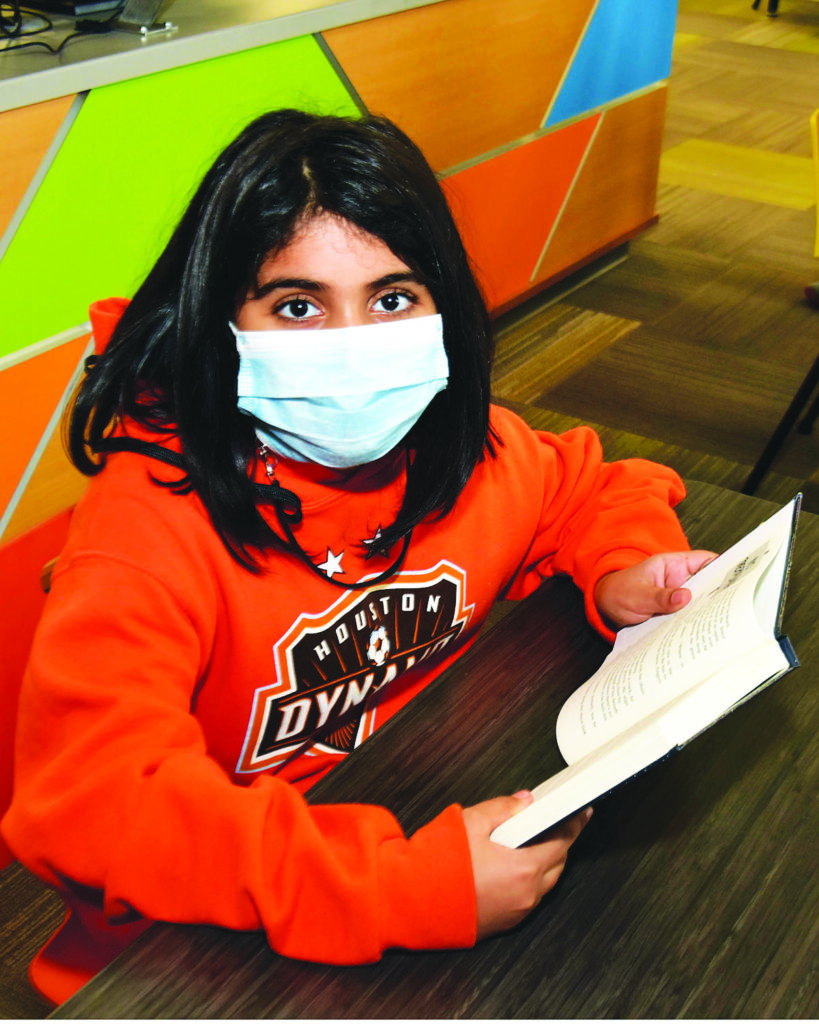Nancy Edmonds Hanson

A young reader at Dorothy Dodds Elementary.
Young readers are drawn to stories that ring a bell – that reflect their own families and their lives. That’s what makes a major gift to Moorhead’s early readers so special, suggests Moorhead Public Schools media services director Julie VanWatermulen: These are books with characters who look like them.
All of them. One-third of Moorhead’s school-age children reflect the community’s increasing diverse ethnic and racial composition. Yet until rather recently, the faces, names and characters featured in most books that populate the shelves of libraries and classrooms have leaned heavily toward white culture and experiences.
That’s what inspired the Moorhead Rotary Club’s Cultural Literacy Project as part of its centennial celebration. Working with media specialists in the city’s elementary schools, the club has purchased $10,000 worth of books that reflect all the colors, cultures and concerns of these youngest readers. The local portion of the funding was matched by a grant from Rotary District 5580.
“Moorhead schools have students who speak 40 different languages or dialects at home,” Julie points out. “Many students starting school come from homes where English is not the primary language being spoken. We want them to recognize their own experiences as they are learning to read – and to open up new worlds to their classmates.”
The local Rotary group was looking for initiatives that reflect the international organization’s longtime focus on advancing world understanding and peace. Members Jerry Rogers and Russ Hanson approached Julie with their proposal. She seized on it enthusiastically as a way to not only get youngsters excited about books and reading, but an avenue to pry them away from the screens that take up more and more of their time.
Research shows, she says, that elementary school children actually prefer physical books. “I know that might seem surprising, but usage of our own ebooks and reading databases shows that these aren’t what they want most. They crave physical books. Our circulation statistics support that.”
That preference for ink-on-paper was evident last week as young readers tore into boxes of fresh books delivered to S.G. Reinertson, Dorothy Dodds and Robert Asp elementary schools along with Horizon West. (Ellen Hopkins School will receive theirs in coming days.)
The culturally diverse titles chosen by media center directors for their own schools run the gamut from funny tales of friendship and everyday adventures to stories about places and people from around the world. Julie cites the words of scholar Rudine Sims Bishop, who observes that books are “mirrors, windows and sliding glass doors.” When children see themselves reflected on their pages, they feel affirmed; when they cannot, she points out, they may feel devalued or invisible.
“Our libraries need to be places where all children from all cultures can see themselves,” Julie says. “We want to provide K-6 students with materials that promote curiosity and receptivity to new ideas.”
The Rotary collections were drawn from a rapidly increasing catalog of volumes exploring less well-known themes, including the refugee experience and everyday cultural practices that may seem foreign to the 70% of young Spuds who come from the area’s dominant population. It’s exposure that, Julie suggests, helps lay a foundation for empathy and understanding.
“Books are one of the very few ways young children can get glimpses into another person’s life and story,” the librarian points out. “They force your imagination to picture and interpret them. The most impactful thing we can do is inspire someone to say, ‘I can feel what you went through.’ These early years of school are absolutely the best time and place to start.”


